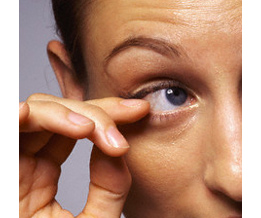 Sometimes your eyelid simply twitches. It is rarely uncomfortable-- but it can be irritating. Most of all, it can make you wonder if there is really something wrong. Generally, there isn't.
Sometimes your eyelid simply twitches. It is rarely uncomfortable-- but it can be irritating. Most of all, it can make you wonder if there is really something wrong. Generally, there isn't.
Eyelid twitches (or essential blepharospasm) are involuntary muscle movements that happen in one or both eyelids.
Mild occurrences are very common, similar to the minor muscle spasms most people experience in their arms or legs. Extreme cases (which only occur in one of every 20,000 people) can be much more serious, with severe twitching that essentially forces the eye closed. In these cases, twitching may also branch out to other areas of the eye, including the eyebrows, mouth, and neck.
What Causes Eyelid Twitches?
Researchers have speculated on several causes – including misdirected brain activity, tired eyes, too much caffeine, certain drug withdrawals, stress, irritation or dry eyes. However, the cause of most eyelid twitches remains unknown.
Symptoms of Eyelid Twitches
Symptoms of eyelid twitches may include:
Treatment for Eyelid Twitches
Mild cases of eyelid twitches are isolated, and will go away on their own. Gently massaging the affected eyelid may help the muscle relax, and minimize the twitching. You may also want to use some eye drops in case dry eye is a contributing factor.
More chronic forms of the condition can be treated in the following ways:
-
Facial injections: Injections are administered to cause localized paralysis around the affected area. In most cases, the eyes are immediately responsive, and symptoms are relieved between injections. The typical administering schedule for injections is every three months, but varies from patient to patient.
-
Surgical removal of muscles around the eyelids: This method is only used in serious cases, for patients who do not respond to other forms of treatment.